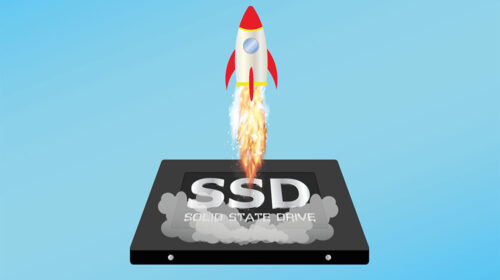Earthing Solutions – The Power System Earthing Training
Electricity is one of the most hazardous elements that we deal with in our day-to-day lives, and it has a huge potential of creating significant damage to properties or causing fatal injuries. Therefore, when dealing with electrical or power systems, several safety precautions should be taken to mitigate the danger electricity poses, especially when using high voltage power systems for commercial or industrial use. A good example of such a measure is the earthing of electrical systems, to reduce the risk of electrical failures because of circuit overload.
Applications of power system earthing
Electrical earthing is a very important service that is required in any area where electricity is being used. Earthing can be used in simple situations such as when dealing with low voltage electric currents in residential areas to the high voltage and extra high voltage currents used in commercial and industrial applications. And while earthing is important in all these areas, it plays a very huge role when operating high voltage and extra high voltage power systems, where even a slight mishap can lead to a fatal failure. In these high voltage scenarios, earthing is applied in several ways such as:
1. Power distribution and transmission systems – for example, earthing of transformers and power substations
2. Large projects dealing with electricity, for example, electrification of railway systems
3. Industrial applications, for example, power systems used in various industries
4. Building projects – when electricity supply is being installed
Power system earthing training
By looking at the above applications, there is no doubt that earthing is a very important aspect of electrical and power systems. Therefore, measures should be taken when applying earthing solutions, to ensure that the safety of power systems, property, and people working around those systems is maintained. One of the best ways of achieving this is by ensuring that only professionals who have received the necessary training are allowed to carry out earthing tasks. Professionals working with power systems should thus take necessary training courses, such as the Power Systems Earthing Training Course.
The Power System Earthing Training an organisation that is known all over the UK and the world for offering various technical and consultancy services, as well as offering training programmes for professionals working in various industries. It is a 2-day training course that provides professionals with basic knowledge on the earthing of power systems.
Who can take the course?
The power system earthing training is designed for all professionals working with electrical or power systems. These include electrical engineers and technicians, quality control professionals, design engineers, and other professionals that are tasked with design, manufacture, acquisition, installation, operation, and maintenance of power systems.
The power system earthing training is comprised of the following areas:
1. Course introduction
This part of the course covers the basics of power system earthing such as the importance of earthing, equipment used in earthing, types of earthing systems, and earthing system standards.
2. Soil Resistivity
This part of the course covers various aspects related to the measurement of soil resistivity. It covers the resistivity ranges for the different types of soil, techniques for measuring soil resistivity, and how to use measurement data in the earthing of power systems.
3. Measuring earth resistance
Earth resistance is another topic that is widely covered in this course. It deals with various techniques used to measure earth resistance, different types of equipment and their limitation, challenges faced during measurement, interpretation of measurement data, visual inspection before measurement, and identifying locations for burying electrodes.
4. Quality standards
This part of the course deals with the statutory requirements and the quality standards related to power system earthing. It covers various legislations that affect earthing, accepted UK and international earthing standards, new earthing techniques, and others.
5. Components of earthing systems
This part covers components of earthing systems and how they affect earthing, for example, tower lines and electrical cables. It also covers how to handle the effect caused by these components on earthing.
6. Designing earthing systems
This is the final theoretical part of the course, which deals with the design of earthing systems. In this part, the course candidates are taken through case studies of various system designs. They also learn about basic design principles, various earthing systems that have been used in the past, materials used in earthing, methods for installing earthing systems, incorporating structures in earthing systems, and how to develop a good earthing design.
7. Practical sessions
The practical part of this course includes the practical measurement of soil resistivity and earth resistance where course candidates learn firsthand about various equipment used in earthing. This section also includes analysing the collected data using various software.
The benefits of power system earthing training
Earlier, we looked at the applications of earthing, which are very many. However, despite the great role played by earthing, it can only be effective if it is carried out by professionals who are properly trained, thus bringing about the need for power systems earthing training.
1. Reducing the risk of fatal failure
Earthing provides the electrical circuit with an alternative direction of flow, where the excess current can escape away and be neutralised in case of an electrical surge. Providing power system earthing training to professionals who deal with power systems equips them with the necessary knowledge and skills, thus making sure that they do their job right. This helps to prevent the overloading of power systems in case of a surge in the electric current, thus making sure that electrical failures do not occur even when other measures such as fuses fail.
2. Cost-saving benefits
Electrical failures that occur as a result of poor earthing solutions or lack thereof can lead to very expensive consequences for an organisation, which comes in the form of expensive repairs to the power systems, damage to property, costly shutdowns (in the case of industries), and even loss of life – can lead to expensive litigations. Providing professionals who work with power systems with good earthing training helps to prevent the occurrence of the above situations, thus saving organisations who hire them a lot of money.
3. Providing professionals with added knowledge
Just like with everything else in the world today, the power sector has changed a lot and it will continue doing so in coming years. Therefore, standards used in areas such as power earthing solutions have changed and will change more in the future, as newer methods of doing things and more advanced power systems are introduced. Professionals who are tasked with providing earthing solutions must therefore continue refreshing their skills, thus ensuring that the earthing solutions.
4. Added advantage to professionals working in electrical related disciplines
Power System earthing training might be a benefit to organisations that hire the qualified professionals, but it is also a very huge bonus for the professionals. Being certified as a power system earthing professional provides you with a great qualification to add to your CV, thus making you qualified for more roles in the energy sector as well as other sectors dealing with electrical and power systems.



